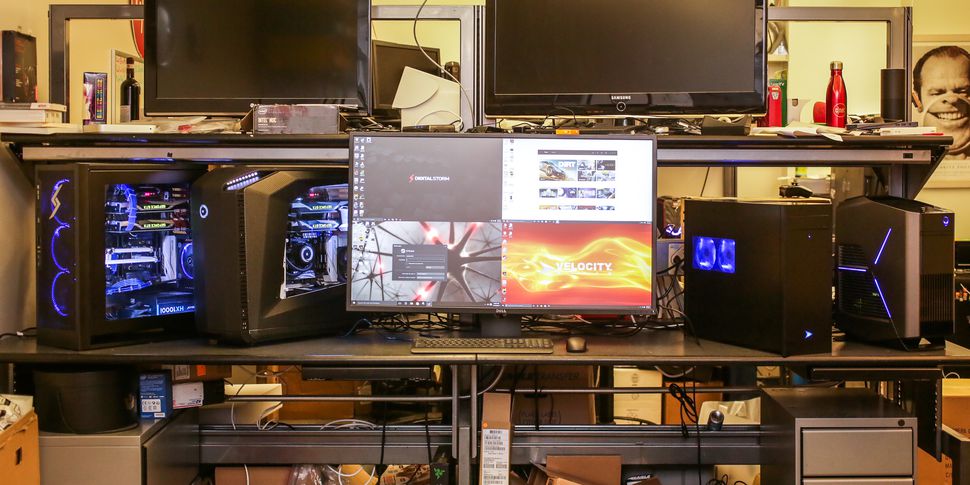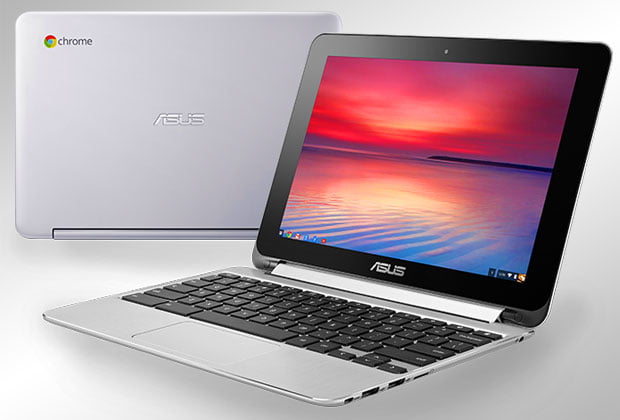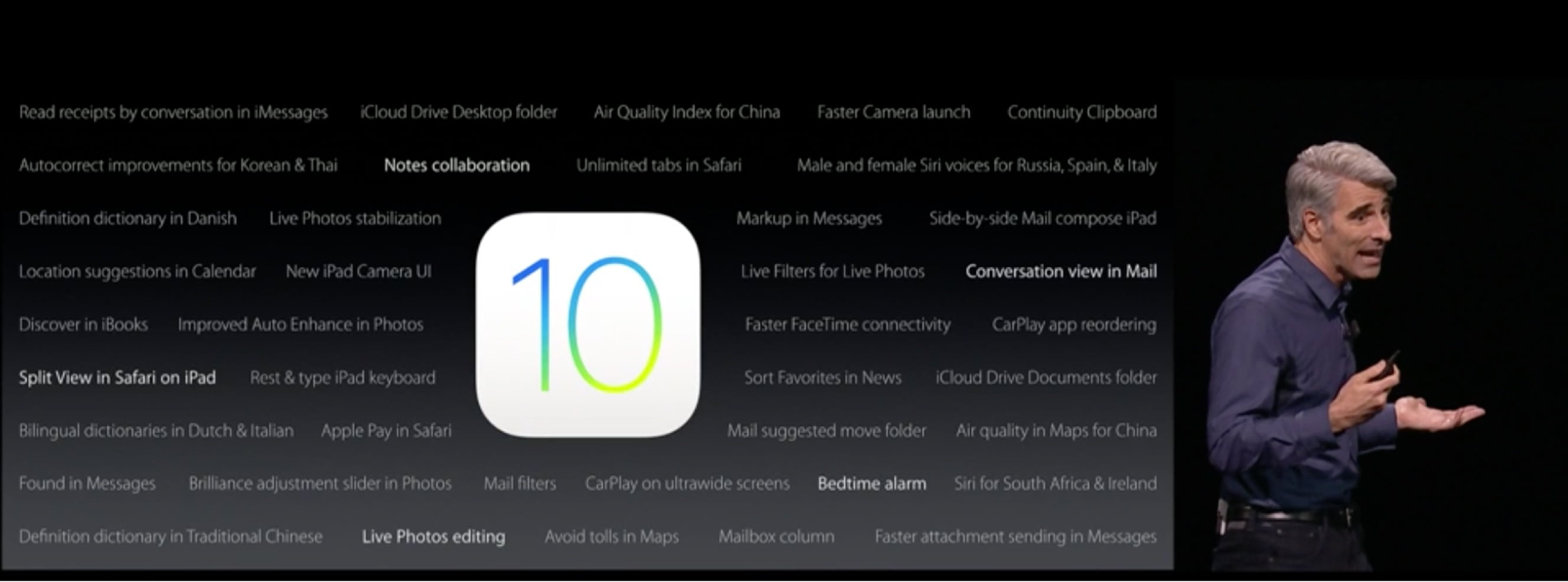
The rise of virtual-reality headsets, including the HTC Vive and Oculus Rift, has led to a surprising arms race in gaming desktops, a category that’s languished in the past few years.
Adding fuel to the fire is a new generation of graphics cards, the most important component in a gaming or VR-ready PC. Nvidia has new desktops cards, led by the GeForce GTX 1080 (replacing the previous-generation 900-series cards). At around $600 in the US (which works out to £560, AU$815) it’s reasonably priced for a flagship card, and will be joined by the lower-cost GeForce 1070 and GeForce 1060 cards.
AMD also has a new generation of GPUs, led by the Radeon RX480, which promises basic VR performance in a $199 card.

The case for new graphics cards
We’ve already tested nine VR-ready desktops with previous-generation Nvidia 980 graphics cards, all of which will provide excellent performance in the first generation of virtual reality games and apps. This new roundup covers desktops with Nvidia 1080 graphics cards, including a couple of systems with dual GPUs. Current-gen VR experiences (and frankly, most PC games) can’t really take advantage of the extra power from running two graphics cards at once (Nvidia calls a setup like this SLI), but adding a second card is a form of future-proofing against the next few generations of games.
We’re already seeing the first examples of game content that requires new GPUs. Nvidia has just released a free demo called VR Funhouse that uses advanced physics and only works with newer cards (either 1000-series cards or the slightly older 980Ti cards).

The verdict is that these new cards, part of the first wave of PC components at least partly designed with VR in mind, offer amazing performance. A single Nvidia 1080 card is expensive, yes, but not outrageously so. And the pair of dual-card systems we tested showed a big boost in our tests as well, but keep in mind, you can always add a second card later on if your PC case has room for it.
Of course, none of this will come cheap. While the least-expensive VR-ready desktops are available from around $999 in the US (roughly £716 or AU$1,390), that covers only the minimum system requirements — an Intel Core i5 CPU and Nvidia 970 GPU — a setup that already feels dated. In contrast, the newer desktops tested here were configured to cost from $2,200 to more than $6,000
One especially exciting highlight is the inclusion of two versions of a new all-in-one gaming desktop. Both Origin PC and Digital Storm have versions of this chassis, which features a 34-inch curved display. Behind the back of that display is enough room for desktop-level CPU and GPU components, making this a rare VR-ready all-in-one, and one that’s upgradable down the road, thanks to easy component access.
Note that most of these are build-to-order PCs, and exact prices and available components can shift over time. These prices are all in US dollars and are current as of this week. We’ll be updating this feature in the near future with more new Nvidia 1080 desktops and new test results (including just-arrived entries from Falcon Northwest and Acer).

Alienware Aurora
$2,279
This new design from Alienware sits between the giant Area-51 and the smaller Alpha. It’s also got the easiest-to-open case I’ve seen on an Alienware desktop in years, plus room inside for a new Nvidia 1080 GPU and three hard drives. Our unit had a few upgrades, but the Aurora starts at $799, and configs with the Nvidia 1080 start under $2,000.

Velocity Micro Raptor Z55
$2,794
We reviewed a version of this system with the Nvidia 980Ti graphics card for our initial VR-ready PC roundup. Now, the same understated, buttoned-down look has a new GeForce 1080 card, and for about the same price. This is a great built-to-order PC if you want something that fades into the background, with a subtle black brushed-metal finish and minimal branding.

Origin PC Omni
$3,380
One of two versions of this curved-screen all-in-one PC we’re currently testing. Boutique PC makers such as Origin PC take these chassis and customize them, adding their own components and testing and tweaking for maximum performance. The highlight is the 3,440×1,440-pixel, 34-inch curved display, but there’s also a Core i7 CPU and an overclocked Nvidia GeForce 1080 card around the back.

Digital Storm Aura
$3,419
Another take on the same general idea, this time from Digital Storm. Both of these all-in-one gaming PCs had roughly similar configurations, cost around the same, and offered similar performance. Plus, thanks to the inclusion of desktop components (most all-in-one PCs use mobile parts), they work with VR headsets. My only reservation about these all-in-one systems is that some games don’t work well, or require extra tweaking, when played at the native 3,440×1,440 21:9 resolution.

Origin PC Millennium
$6,050
One of our favorite midsize desktops (which is an odd term for something to gigantic), this desktop uses a custom chassis that can be configured with the access window on the left or right side, and the motherboard can be rotated 90 degrees for better airflow. This is one of our dual-1080 systems, which is why it’s so expensive (and it’s the only system we’ve tested so far with Intel’s Core i7-6950X Broadwell-E processor). Plus, both the CPU and GPUs have been expertly hand-overclocked, which is why it’s our overall performance leader.

Digital Storm Velox
$6,236
A massive desktop with more fans than I’ve ever seen on a gaming PC, plus twin Nvidia 1080 cards, liquid cooling, a 1,000-watt power supply and a cooling channel that runs through the bottom of the chassis. All that adds up to a gaming desktop that runs very cool, but is also much more quiet than I expected. And if you like showing off your high-end components, this has the biggest side-panel window of any of these systems.
Benchmarks and configurations
Below, you’ll find benchmark results from the first wave of Nvidia 1080 desktops we’ve tested. Some have overclocked CPUs or GPUs, as noted in the listed specs. One of the only VR-specific tests, the Steam VR test from Valve, is practically useless at this level, as every system here hit the top score of 11 out of 11. Futuremark, maker of popular benchmarks such as 3DMark, is working on a high-end VR benchmark test, but it’s not available yet.
[Source:- CNET]





